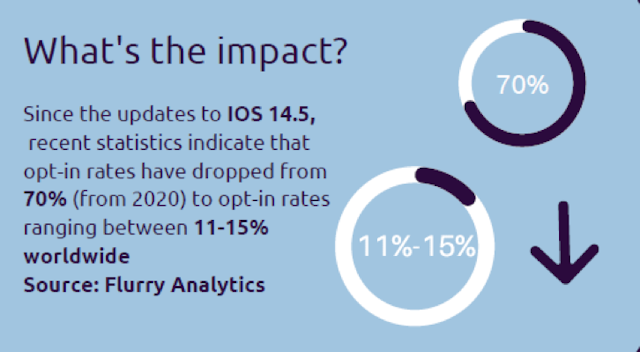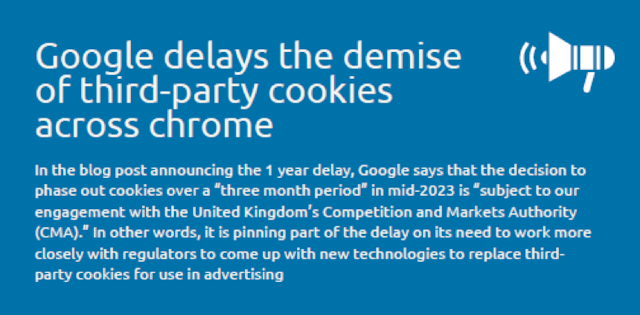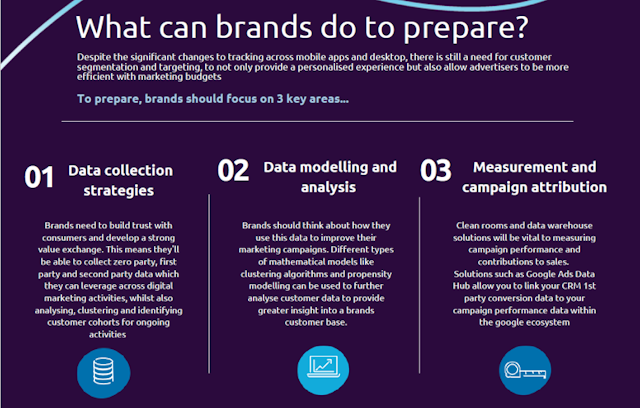A cookie-less world: will segmentation and targeting live on?
Following on from our recent blog, which discusses the impact on marketers based on the privacy changes set out by Google and Apple, we will be discussing how these changes could further impact customer segmentation, and how we target consumers in the future.

Capgemini Invent on how to effectively collect zero-, first- and second-party data to model, analyze and segment customer data
From the iOS privacy changes to the crackdown on third-party cookies, it’s clear that targeting customers will become increasingly difficult for organizations. Over the years, we’ve seen significant shifts across the digital advertising industry as Facebook and Google have solidified their monopoly, embedding themselves across digital media campaigns. With the growing uncertainty on data privacy and skepticism towards Google’s proposed solution to the removal of third-party cookies, will we still be able to segment and target consumers in the same way? And how can brands prepare for the changes to data privacy and app tracking?

View the infographic report for more information on the crackdown on third-party cookies.
In line with Tim Cook’s view on privacy on being a ‘fundamental human right’, the introduction of Apple’s App Tracking Transparency framework now requires apps to ask for permission to track their user activity in-app and mobile activity. Since the updates to iOS 14.5, recent statistics by Flurry Analytics indicate that opt-in rates range between 11-15% worldwide, a significant drop compared to the 70% opt-in rate from the previous year.
With 81% of Facebook users accessing the platform only via a mobile phone, there has been growing concern for Facebook’s capabilities to target customers within their mobile app. Targeting Apple users that have decided to opt out on a device-level will no longer be possible. That said, you will still be able to segment across Android devices.

View the infographic report for more information on the crackdown on third-party cookies.
Previous announcements by Google have also ruffled feathers across the industry. Although Google’s latest announcement reveals further delays to the demise of third-party cookies across Chrome browsers, brands and adtech companies will still need to develop their alternative solutions to individual tracking to remediate the changes. Although Google’s Privacy Sandbox aims to provide a long-term solution to this, the eventual change toward this will continue to put further pressure on brands and advertisers to become more dependent on Google’s marketing ecosystem.
Customer segmentation will still play a key role
Google is looking to offer advertisers an alternative solution for targeting customers without the need to share individual browsing data – its Floc algorithm, which determines and segments users into ‘cohorts’ based on their interests and browsing behavior. Despite the innovative move to combat the changes to third-party cookies, the new proposal has raised further privacy concerns around browser fingerprinting and cross-context exposure. Although further research and testing is needed before this solution can be rolled out, the move towards cohort targeting suggests the importance and continued need to segment audiences to optimize campaigns.
Yet, despite the privacy changes announced, Facebook and Google will still have alternative methods for brands to target. Options such as ‘customer lists’ and ‘custom audiences’, which use deterministic variables such as email addresses and telephone numbers, are still available and can be utilized within their ecosystems to target consumers across their inventory. These identifiers will negate the loss of tracking as these identifiers will persist once logged in and can be used for targeting once consented, promoting the importance of first-party data collection and encouraging brands to pivot in the way in which they segment audiences.
By further strengthening these walls within their gated communities, brands will become increasingly dependent on Facebook and Google, given the amount of data that is available and the ease at which they can scale marketing activities across their ecosystem. That said, brands will still need to look for solutions to measure the impact and performance of app-install campaigns given the multiple restrictions Facebook looks to introduce.
What can brands do to prepare for these changes?

View the infographic report for more information on the crackdown on third-party cookies.
Despite the significant changes to tracking across mobile apps and desktop, there is still a need for customer segmentation and targeting, to not only provide a personalized experience but also allow advertisers to be more efficient with marketing budgets. In preparation for these changes, brands should focus on three key areas:
1. Data collection strategies
The growing importance of zero-, first- and second-party data collection means brands need to ensure that they have strategies in place to capture and leverage this data. By building trust with consumers and developing a strong value exchange, brands will not only be able to leverage this data across digital marketing activities but be able to analyze, cluster and identify customer cohorts for ongoing marketing activities. Function of Beauty is an example of a brand that has been able to incorporate zero-party data collection into their customer journey. In exchange for customers sharing their preferences and interests, FoB is not only able to provide a tailored service for their customers, but also build cohorts of users that have shown similar preferences.
As third-party data becomes more limited in its use, the development of second-party partnerships with publishers and retailers will also grow in importance. Brands could look to utilize services such as Liveramp’s safe haven to share data between partners – building hybrid audiences between the datasets and creating enriched customer segments that can be leveraged by both parties.
2. Data modeling and analysis
Brands should think about how they use this data to improve their marketing campaigns. Different types of mathematical models can be used to further analyze customer data to provide greater insight into a brand’s customer base.
Clustering algorithms has been a method used to discover new personas or archetypes. Brands can then use this data to target customer groups with personalized offers and incentives, further improving their experience. If we take Sowmya Vivek’s example, he uses K-means Clustering to identify customer groups based on income and spend and identifies six main customer groups from the results. These groups could then be targeted specifically with tailored marketing communications/promotions, providing a more bespoke customer experience.
Propensity modeling has also been used to identify customers who are more likely to take an action such as purchasing a product or signing up for a promotion. In 2019, M&S built a propensity model to identify customers who were the most engaged and significant spenders. As a result of targeting these two segments, M&S saw an uplift of 114% in orders and an 81% uplift in revenue from the previous year.
3. Measurement and campaign attribution
Clean rooms and data warehouse solutions will be vital for measuring campaign performance and contributions to sales. Solutions such as the Google Ads data hub allow you to link your CRM first-party conversion data to your campaign performance data (within the Google ecosystem), giving brands insight into how users engage with ads across the Google ecosystem at an aggregate level. This is one of Google’s solutions to the GDPR regulations introduced, which prohibit brands from collecting individual user interactions across publisher websites.
With the ongoing developments and uncertainty on data privacy and app tracking, customer segmentation will still be key for brands to efficiently target their customers across campaigns. Brands should look to focus their efforts toward the collection of zero-, first- and second-party data and build technical capabilities to model, analyze and segment their customer data further. This will provide key insights that will allow brands to build and optimize their digital marketing strategy and provide a more personalized experience for customers across their digital journey.
View the infographic report to see how the third-party cookie update will affect customer segmentation and how you can prepare for this change.
If want to learn more about how Capgemini Invent can help you adapt to a cookie-less world, get in touch.
Duke Nguyen, digital marketing senior consultant for brand and content at Frog, part of Capgemini Invent.
Content by The Drum Network member:

frog
frog is a leading global creative consultancy, part of Capgemini Invent. Partnering with passionate leaders and visionary entrepreneurs, we apply creativity, strategy,...
Find out more
